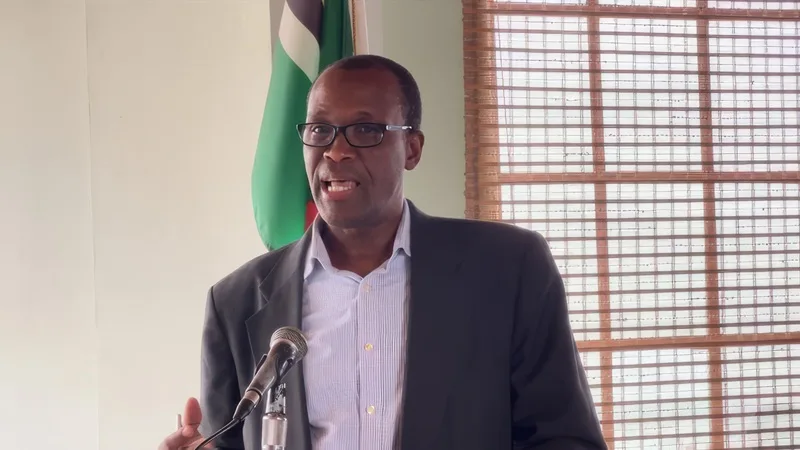National Energy Policy (2021)
The National Energy Policy (2021) marks a decisive shift in Dominica’s energy strategy, prioritising sustainability, resilience, and access. Designed to transform an energy system dominated by imported diesel into one powered entirely by domestic renewable sources, the policy is central to the island’s ambition of becoming the world’s first climate-resilient nation. With its clear target of 100% renewable electricity by 2030, the framework sets the stage for long-term growth, cost stabilisation, and environmental stewardship.
Strategic Goals and Policy Rationale
Dominica’s historical dependence on imported diesel proved costly and unstable, with rising global fuel prices directly affecting residential and commercial electricity bills. The 2021 policy addresses this challenge by promoting energy generated locally from sources such as geothermal, hydropower, solar, biomass, and wind. The shift is anchored in five guiding principles: ensuring affordability, improving reliability, expanding access (especially to remote areas), minimizing environmental impact, and integrating energy into broader national development plans.
The policy replaces earlier directives by formalizing renewables as the cornerstone of the energy mix. It also aims to cultivate economic activity through local green-technology jobs, such as renewable installations and technical maintenance, opening new avenues for employment and social resilience.
Institutional Foundations and Legal Support
The policy builds on existing legal frameworks and aims to enhance regulatory coherence. Underpinning legislation includes:
- The Geothermal Energy Act, originally passed in 1974 and updated in 2016, which establishes licensing and resource management guidelines.
- The Electricity Supply Act (2006), which created the Independent Regulatory Commission (IRC), tasked with rate oversight and net‑metering.
- A 2016 inclusion of distributed renewables, allowing households and businesses to generate electricity and feed excess to the grid.
By refining these laws, the 2021 policy ensures that reforms are legally enforceable. It envisions the establishment of a Renewable Energy Authority and the launch of a dedicated funding mechanism to support infrastructure projects, training programs, and community engagement, subjects that are currently at varying stages of implementation.
Renewable Source Policy Approach
Dominica’s diverse geographical endowments allow for a multi-pronged renewable strategy. Hydropower already contributes about 4 megawatts (MW) through plants at Trafalgar, Padu, and Laudat, which provide steady base-level generation. However, the completed installation remains underutilized compared with demand, and the policy outlines financing and technical upgrades to boost hydropower output.
Solar energy, approximately 6.6 MW installed, offers daytime energy but faces seasonal variability. Net-metering policy enables households and small businesses to trade power back to the national grid, although uptake has been limited by cost barriers and technical restrictions. Battery energy storage systems (BESS) are planned to support solar’s intermittent nature and to stabilize voltage and frequency across the network.
Geothermal Prioritization
At the heart of the renewable strategy is geothermal energy, particularly in the volcanic region of Laudat. A Caribbean Development Bank-backed project, financed with a US$34.8 million loan in 2024, will deliver a 10 MW geothermal power plant, Dominica’s first utility-scale geothermal generation. Once online, it is projected to cover base-load demands and supply clean power to approximately 23,000 households, sharply reducing fossil fuel use.
The policy also envisions scrutinizing wind and biomass for localized energy production. Though full-scale wind farms are constrained by topography, smaller generation sites and biomass from agricultural residues are being assessed, offering economic returns in rural areas.
Community Integration and Energy Equity
A key innovation in the policy is its focus on energy equity. Not only does it aim to reach 100% renewables at the national level, but it also includes provisions to extend affordable, reliable power to remote settlements. Support for mini-grid development and off-grid solar installations is intended to benefit communities that currently lack stable energy or are disproportionately affected by power disruptions during storms.
Community buy-in has been fostered through stakeholder consultations and environmental assessments. Particularly in geothermal expansion areas, communities have been involved in approaching land-use agreements, impact disclosures, and job-skills training, demonstrating an attempt to balance infrastructure growth with local rights and benefits.
Implementation Milestones and Monitoring
Accountability measures include regular reporting on metrics, such as:
- Installed capacities across renewable types
- Savings in imported diesel consumption
- Expansion of consumer renewable connections and mini-grid systems
- Local job creation in energy sectors
- Degree of reduction in greenhouse-gas emissions
The policy commits to issuing annual “energy scorecards” to track performance, with mid-decade reviews and alignment to the Climate Resilience & Recovery Plan, ensuring that energy ambitions continue to support broader development objectives.
Addressing Risks and Future Directions
Key challenges include technical capacity constraints, land-use competition, and financing limits. The rugged landscape that limits large-scale solar and wind, coupled with technical skills shortages, requires targeted interventions, an area supported by related training programs aimed at solar technicians and geothermal specialists.
Environmental studies and public engagement aim to prevent conflicts over land, ecosystems, and agricultural use. Renewable energy is framed as a catalyst for new revenue streams, such as green hydrogen and renewable energy exports, but realizing these opportunities will depend on regional cooperation and sustained private investment.
The National Energy Policy (2021) is a pivotal document that charts Dominica’s energy future. By embedding renewables into institutional, legal, financial, and community frameworks, and by aligning energy outcomes with environmental and economic resilience, the policy offers a model for small island states. With genuine implementation, Dominica may achieve energy autonomy, climate-preparedness, and meaningful sustainable development, demonstrating how ambition, planning, and local participation can unite to solve longstanding national challenges.




